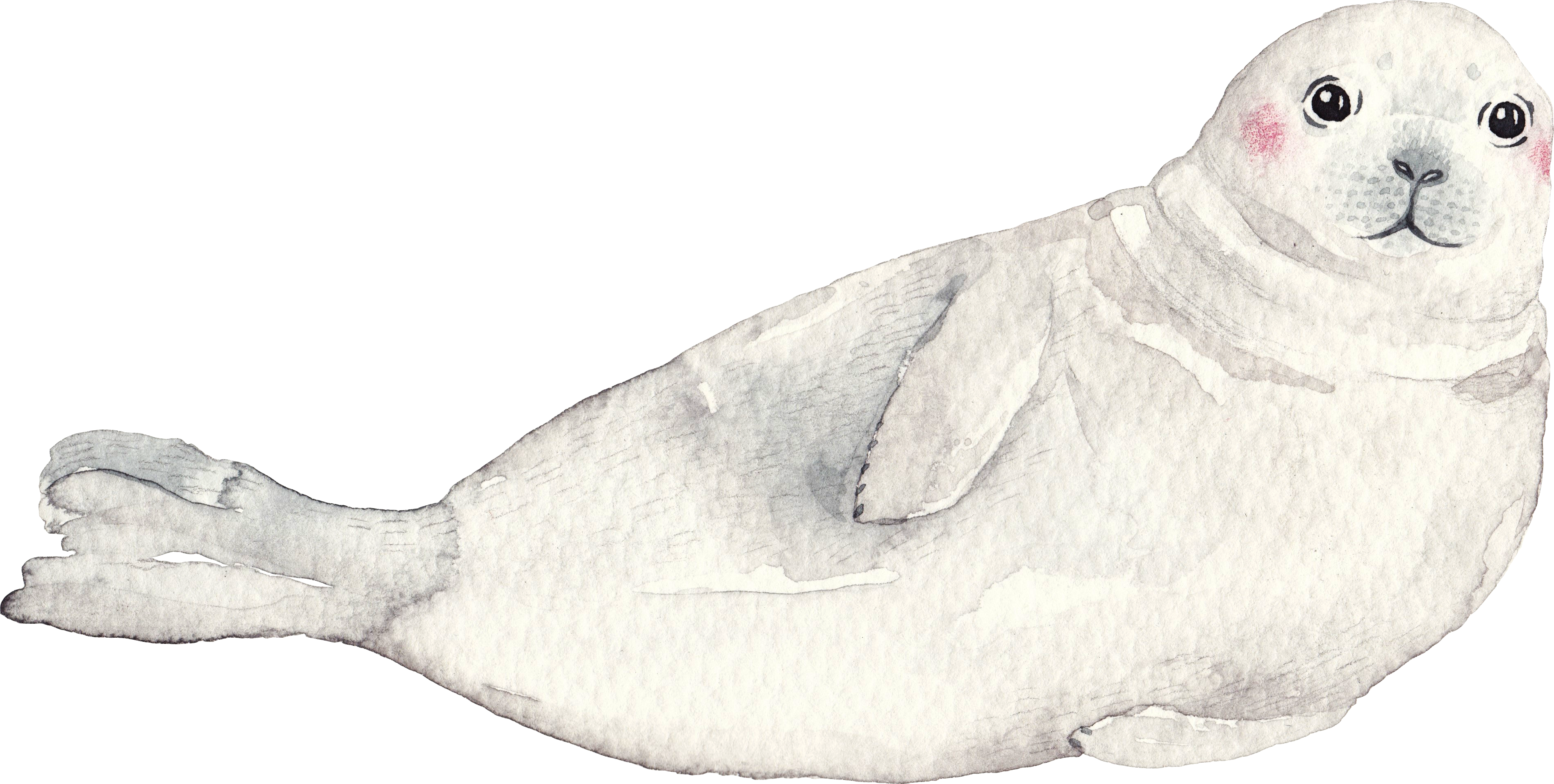Polar Ice Caps
We refer to the polar ice cap biome as the regions of the planet covered by ice most of the year. This includes large portions of the Arctic and Antarctic.
The Polar Ice Caps could be considered the harshest place on Earth, yet in this majestic seemingly frozen wasteland, life still finds a way. Located at the extreme poles of our planet, the ice caps undergo strong seasonality and in the winter have record lows of 80°C (-112˚F)!
The lack of solar radiation and low temperatures form these large masses of ice that do not even totally melt in the summer. The plants and animals that live here are different in the Arctic versus the Antarctic, but they have similar adaptations to help them survive the long, cold, and dark winters as well as take advantage of the short yet productive springs and summers. These productive summers and harsh winters also mean that these regions are home to a lot of migratory species.
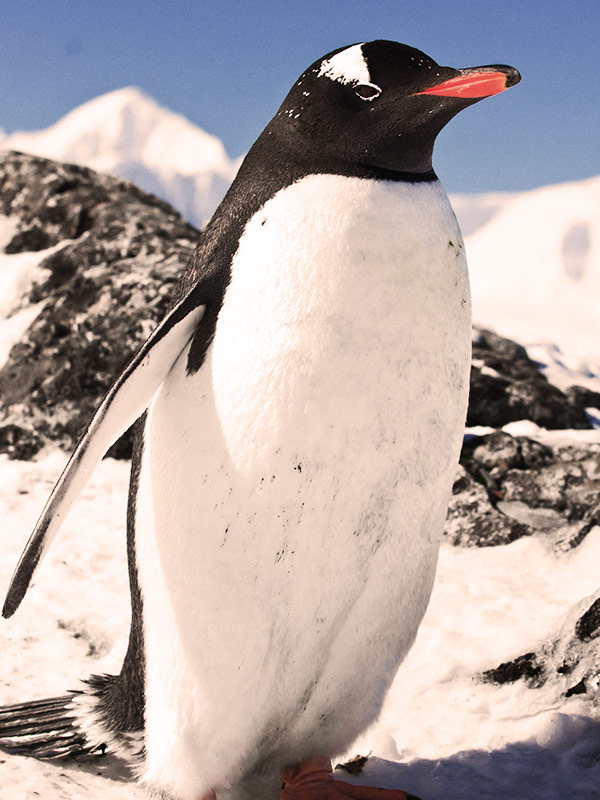
This frozen block of freshwater is melting
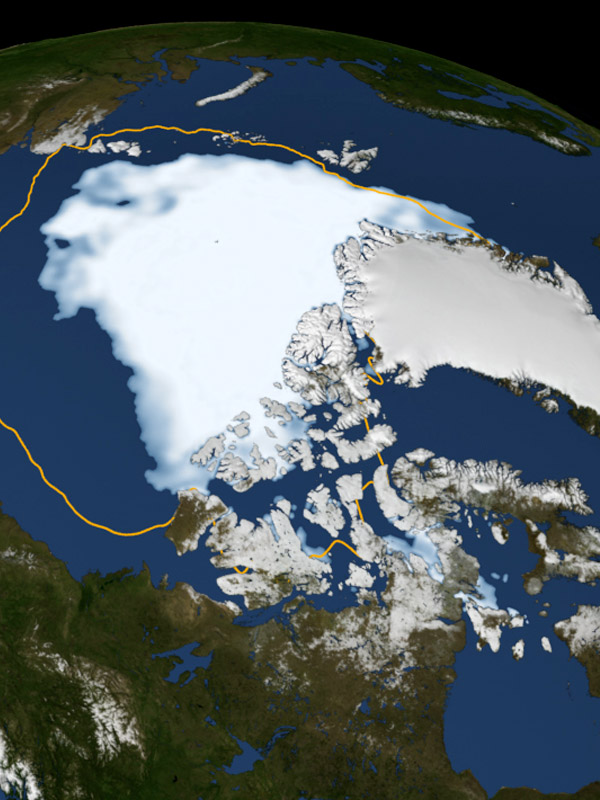
What defines the polar ice cap biome? What adaptations do polar animals and plants have that allow them to survive here? What adaptations do polar migratory animals have to allow them to travel such great distances so often? That’s what we’re going to explore here.
Please note: The Polar Ice Caps Biome can also be referred to as a ‘cold desert’. We talk about cold deserts in the Desert Biome but have also divided them here to elaborate more on this unique region. We did this because this biome has certain properties that make it very different from the other deserts (mostly in terms of temperature and sunlight hours) and the adaptations of the plants and animals that live here are therefore quite different.
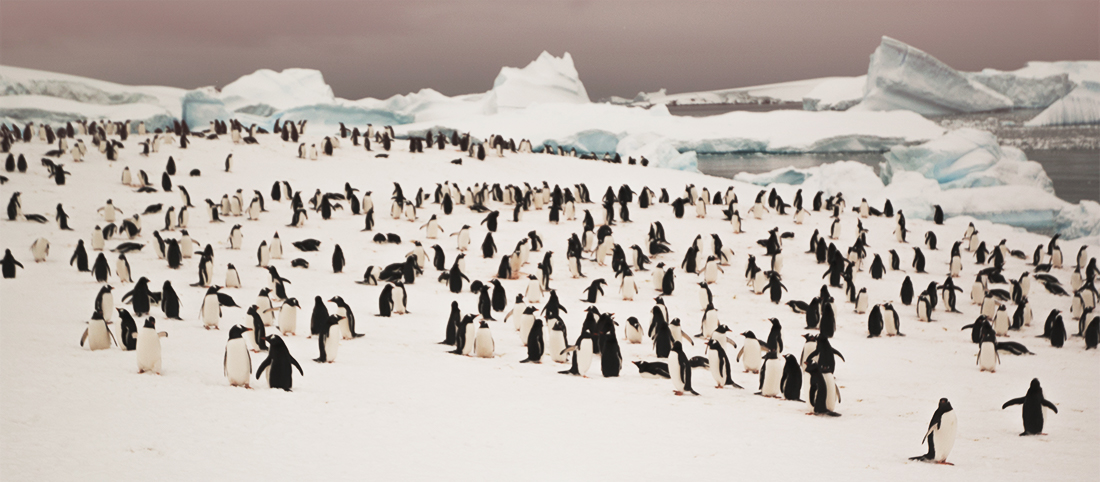
WHERE ARE THE POLAR ICE CAPS FOUND?
Based on the lines of latitude (the imaginary lines that run east and west on our planet), we can divide the world into three regions: Polar, tropical, and temperate. Polar regions are the most northern and southern (between 66° and 90° lat) , with temperate regions further towards the equator (23° and 66° lat) and tropic regions in the center (between 0° and 23°) surrounding the equator line.
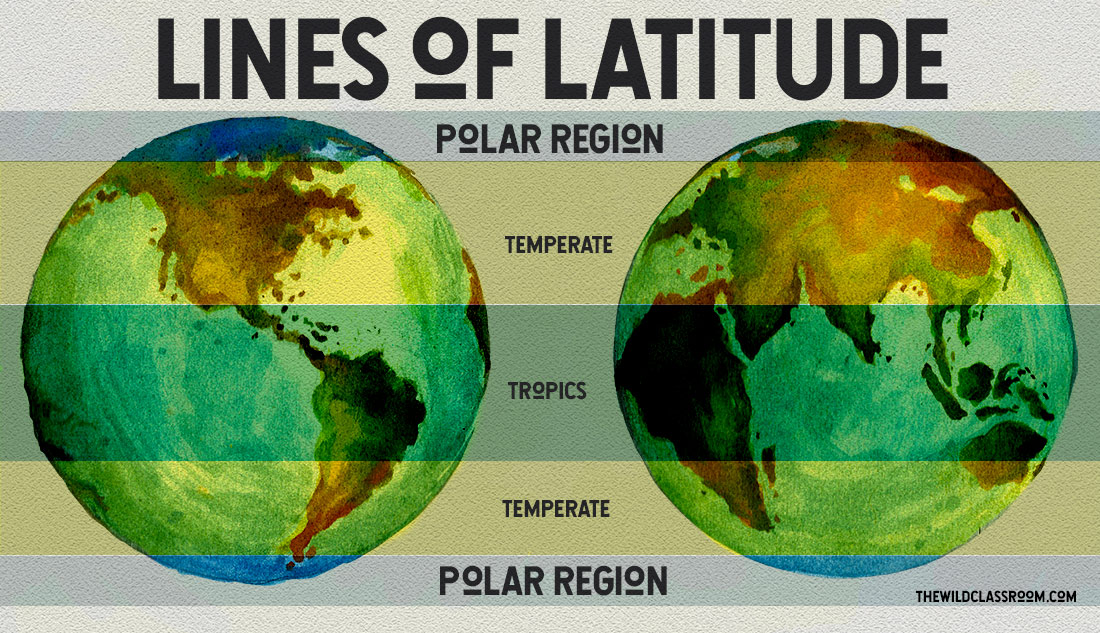
The polar ice caps are found, clearly, in the polar regions – they start at the extreme poles of our planet and stretch outwards, covering almost the entirety of Antarctica, the Arctic Ocean, the majority of Greenland, a good portion of northern Canada and some of Siberia and Scandinavia.
This area that is covered in ice much of the year, and some of it all year, is considered the polar ice cap (definitions below). The amount of area covered by ice changes seasonally… but don’t forget that the opposite poles experience summer and winter at opposite times of the year!
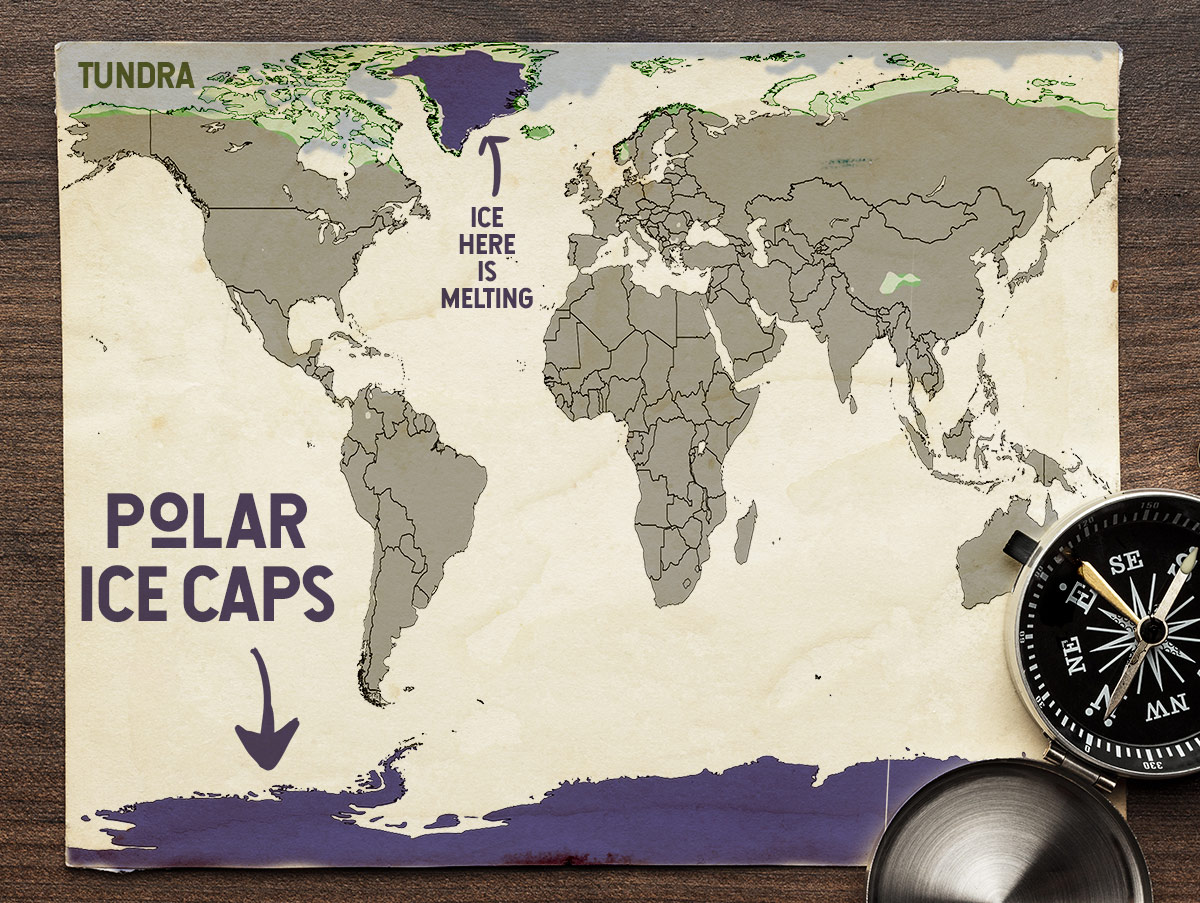
WHAT DEFINES THE POLAR ICE CAPS?
A polar ice cap, or polar ice sheet, is the polar region of a planet or moon that is covered in ice. Technically speaking, an ice cap is a dome shaped glacier that needs to be less than 50,000 km² (~31,000 square miles) and is always over land, and the larger area of ice is called an ice-sheet – as ice sheets are dome shaped glacial ice that cover an area greater than 50,000 km². Polar ice caps do not have these size restrictions, but they do have to be centered in the polar region.
Now that we have the technicalities down, what else defines the polar ice cap biome? When defining biomes it is important to look at vegetation, and a polar ice cap region is normally a place that has very little vegetation, consisting of small shrubs, herbs and lichens mostly, and definitely lacks trees and large shrubs.
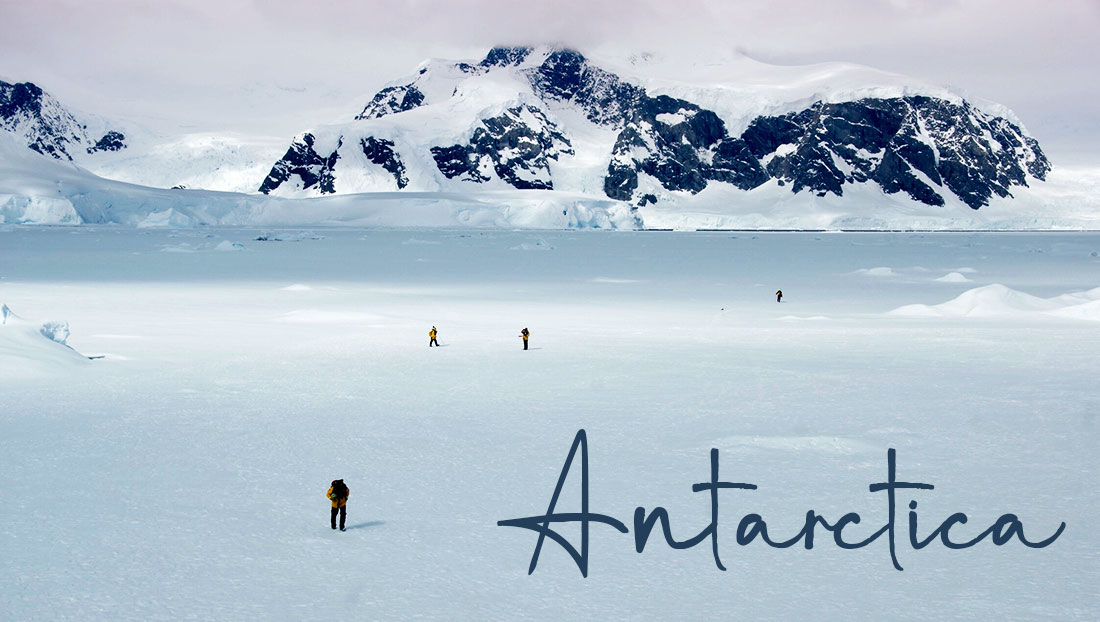
Precipitation
This region can also be called a cold desert due to its lack of precipitation. The polar ice caps normally receive less than 254 mm (10 inches) of snow per year with an average around 150-260 mm (6-10 inches) per year. The majority is in the form of snow but in the summer months it’s possible that it could rain. Occasionally, these areas may receive heavier rains in spring or heavier snowfalls in the winter, but the cold dry air in these regions keeps precipitation low.

Soils
Much of this region is covered in ice all year long, meaning that there is almost no ability for anything to grow here. The large majority of the ice that melts in the summer becomes open ocean but a portion does reveal land. So what are the characteristics of polar soils?
The soils can be quite diverse depending on how close to the coast they are, the variability in that local climate, their elevation, and on how old they are, which is also variable because of all the moving ice, but there are some generalities.
The soil is very cold, with averages between –15°C and –40°C (5 to -40 °F), and has low water content. The soil just below the surface that thaws in spring is referred to as the active layer and is only about 17 to 55 cm (~7-22 inches) thick, and below that is permafrost. Permafrost is the layer of soil in polar regions (though it occurs further south than the northern polar ice caps as well) that stays frozen, or to be exact, remains under 0°C (32 °F) for two years straight. This layer is thicker than active soils in polar regions and can be around 70 cm (27.5 inches) thick depending on the area.
The active soil tends to be quite low in nutrients such as carbon and nitrogen, due to a general lack of biomass (the amount of plants and animals alive in an area) and the long time it takes things to decompose. However, in Antarctica nutrients can be a bit higher under areas inhabited by penguins, because they bring so many nutrients from the ocean and excrete them on land. The salt in these soils tends to form crusty layers instead of being evenly spread throughout the soil horizons.
The soils also vary between the North and South Pole, with Arctic soils containing higher moisture content and organic material when compared with Antarctic soils. Interestingly, the organic material generally forms in a small layer just above the permafrost, which traps many of the nutrients making them less available to plants, but still allowing for more soil life than in Antarctica. As well, Antarctic soil characteristically has surface pebble or boulder pavement, which is small pebbles, rocks and boulders covering most ice free areas.
In general, all of these soil characteristics make it very difficult for plant and animal life to survive here.
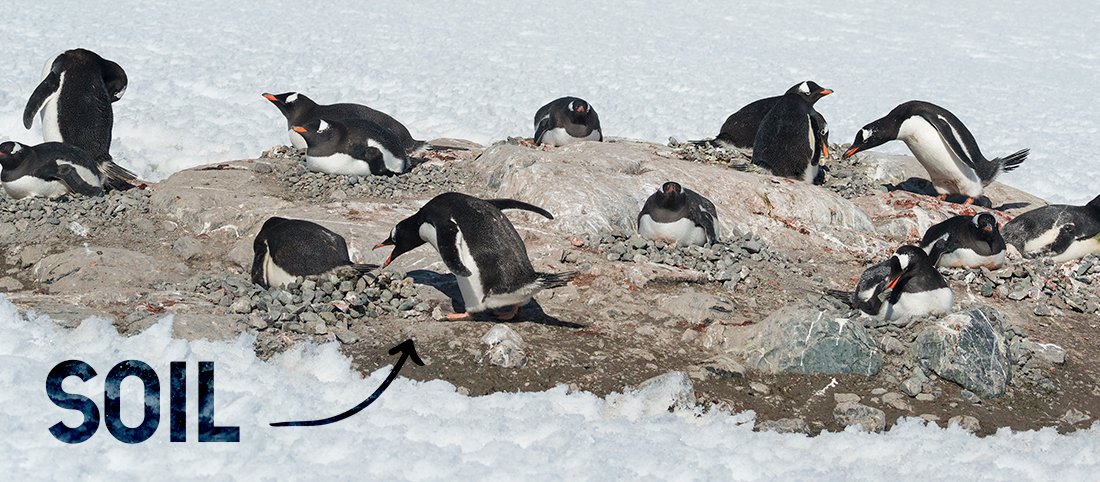
Sunlight hours
Since the polar ice caps are at the extreme ends of our planet, the sunlight hours are very different in summer than in winter due to the Earth’s rotation around the sun. As well, this region receives much less solar radiation than equatorial regions in general, which results in the low temperatures that contribute to the formation of ice caps.
At the equator, there is essentially 12 hours of daylight and 12 hours of night all year round, but the more you go towards the poles the more difference you have in daylight hours seasonally. At the poles themselves, there are months in summer where the sun never sets, while there are also months in winter that are sunless. This difference is a bit less severe as you head towards the equator, and parts of Antarctica for example only experience a few weeks without sun in winter. As well, in many cities and towns in Northern Canada for example, experience a “midnight sun” during the peak of summer, where the sun never completely sets for a few weeks. There are also communities that are far enough north to experience months of sunlight and months of darkness. This drastic difference creates a whole new set of challenges for life in these regions, for animals, plants, and humans.
This page from the Australian government gives some interesting graphs about sunlight hours from their different stations in Antarctica.
Temperature
Again, the polar ice cap biome receives very different amounts of sunlight seasonally, so what are the summer and winter temperatures at the polar ice caps?
The overall average winter temperature is between – 2-4 °C (28.4-39.2˚F) though lows can get down to 80°C (-112˚F) in the peak of winter! On the other hand, summer temperatures range between 21-26 °C (70-79˚F).
It is this drastic change in average temperatures that makes the landscape so dynamic (with all the thawing and freezing), and makes year long survival in this biome very difficult. For this reason, many organisms migrate, which means to travel long distances (usually seasonally) between destinations, to take advantage of rich summers, and to be able to escape the harsh winters. However, there are a range of animals that live in these regions year round, despite the difficulty, see more below.
ICE CAPS THROUGH TIME – SEASONALLY AND LONG TERM
The polar ice caps are formed through low solar radiation, persisting cold temperatures, and short summers, but they do not always look the same, month to month or even year to year.
Due to the seasonal changes in sunlight hours and temperature mentioned above, the amount of land and water covered by ice changes, but much of it remains ice year round. Since the ice cover is difficult to measure, and changes with time, all these numbers are averages and approximations, but the Antarctic sea ice is around 11 million km² (7 million square miles) at its maximum (mid-late september) and 1.6 million km² (1 million square miles) at its minimum in summer (late February/early March), about 14% of its winter size!. While the Arctic ice extent is around 10 million km² (6 million square miles) at its maximum in winter (late February/early March) and 4 million km² (2.5 million square miles) at its minimum in summer (early-mid September), which is about 40% of its winter size.
To put all this into perspective, the two largest countries in the world are: Russia at 17.1 million km² (6.3 million square miles) and Canada at 9.985 million km² (3.5 million square miles).
In the very long term, or in geologic time, the size of the polar ice caps has changed dramatically due to climatic variation, where in multiple ice ages they have extended to cover most of the Earth. It is important to remember that this expansion and retraction happened over very long time periods, and by long we mean tens of thousands to even millions of years. Today, research has revealed that the ice cover is decreasing dramatically each year at a much higher rate than in the past, but we will discuss this later on.
BIODIVERSITY IN THE POLAR ICE CAP BIOME
Though the polar ice caps are considered one biome, the animals and plants that live in each respective region are quite different. Repeat after me “polar bears and penguins do not live in the same place!” When doing your own research on animals of the polar ice caps, make sure you confirm where your animal lives. Most of the life here is found around the edges of the ice caps, as plants can not grow on ice, and many animals rely on these plants or on the open ocean to survive. However, in general, what adaptations do plants and animals have to survive in the polar ice caps?
Plant adaptations to the Ice Caps
A large majority of these areas do not have any plants at all because plants can not live on ice. However, the plants that live in ice free areas consist of low herbs, shrubs, and some grasses but mostly of nonvascular plants like mosses, liverworts, and lichens* that are better adapted to living in these difficult conditions. Trees can not grow here due to low water content, harsh winds, freezing winters and the permafrost making it difficult to have deep roots.
There are more plants in the Arctic polar ice cap than in the Antarctic one due to water and nutrient availability, but plants are still scarce and get more abundant into the transition from polar ice caps to the arctic tundra, where small trees also eventually grow. In Antarctica, there are only 2 types of flowering plants: Antarctic pearlwort (Colobanthus quitensis) and Antarctic hair grass (Deschampsia antarctica). So, what adaptations allow plants to live in the polar ice caps?
*Lichens are not necessarily classified as plants because they are actually a symbiotic relationship, meaning when two things in nature live and work together to survive, between a fungus and an algae. However, they do serve the purpose of a primary producer, which are the organisms that help convert light into energy for other animals that eat them. Lichens live well in harsh environments because they grow very slowly and are small, making them able to survive with less energy and water. .
Water is very limited, so the plants here can survive on very little water. They have shallow roots that can take advantage of the thin active layer of soil and small leaves to prevent water loss (just like many plants in the desert). As well, they are short and hug the ground, or live among cracks in the rock, to avoid being damaged by harsh winds. Lichens, such as the reindeer lichen (Cladina rangiferina), are a great example of these strategies. Interestingly, some polar plants can even live under the snow and photosynthesize in very cold temperatures. As well, it has been found that mosses can regenerate after being trapped in the ice for hundreds of years. This paper even saw regeneration of a moss that was trapped for 400 years!
In addition to these other adaptations, each of these plants takes advantage of the short but productive summers with long sunlight hours to quickly grow, reproduce and store energy for the long difficult winters. You’ll notice that many plants are darker to help better absorb sunlight and flowers are cup shaped to direct the sunlight right to their centers.
Last, a variety of the plants that live here die each winter, coming back to life in spring using the energy that was stored in their roots. These plants are referred to as perennials.
Animal adaptations to the Ice Caps
The polar ice caps are very hard to survive for most animals. There is a lot of productivity and biodiversity in polar oceans, but here we are going to focus on terrestrial organisms, or those who are at least dependent on land (or ice) for part of their life-cycle (such as seals whose pups must live on land or ice at first).
The main challenges here are (1) low productivity and little available food (2) low fresh water availability and (3) surviving the freezing temperatures in the long and dark winters. The organisms that can live here are incredibly adapted to it, while others only migrate here for the short productive summers.
Polar Ice Cap Residents
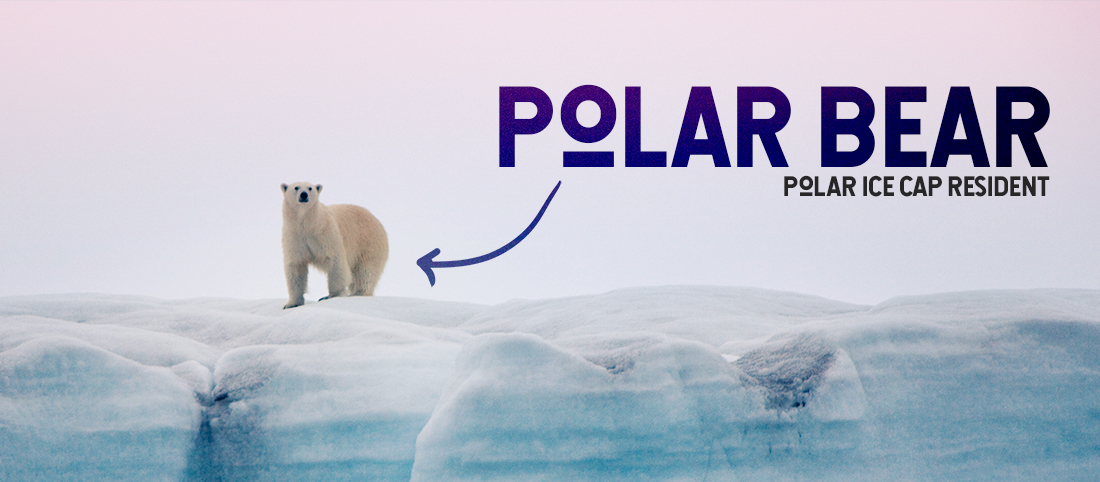
Animals that live here year round need to be able to go long periods without food and to stay warm. Polar Bears (Ursus maritimus) are the most iconic animals of the arctic, for a reason. These bears have key adaptations to live here. First, they have very thick winter coats (an undercoat and an outer coat referred to as guard hairs), which even grow on their feet, and that easily wick off cold water. Amazingly, the guard hairs are actually transparent and can reabsorb the infrared light from their own body heat to prevent some of it from being lost to the environment. As well, their skin is dark black which helps to absorb heat from the sun through their fur. Lastly, they maintain a thick layer of fat (blubber) to help trap heat. If they get really cold, they can stay warm by digging out a pit and laying in the snow, allowing snow to build up over them and trapping heat around them, somewhat like a very quick igloo. However, it is actually more likely for Polar Bears to overheat than to get too cold!
Additionally, polar bears survive by relying on fatty marine life for food. They are extremely good hunters, being camouflaged entirely white, very strong, and fast all helps them to sneak up on seals or other marine mammals that come up onto the ice for air. They have an incredible sense of smell which helps them to find both live prey and dead animals to scavenge on amongst the vast expanses of snow and ice.
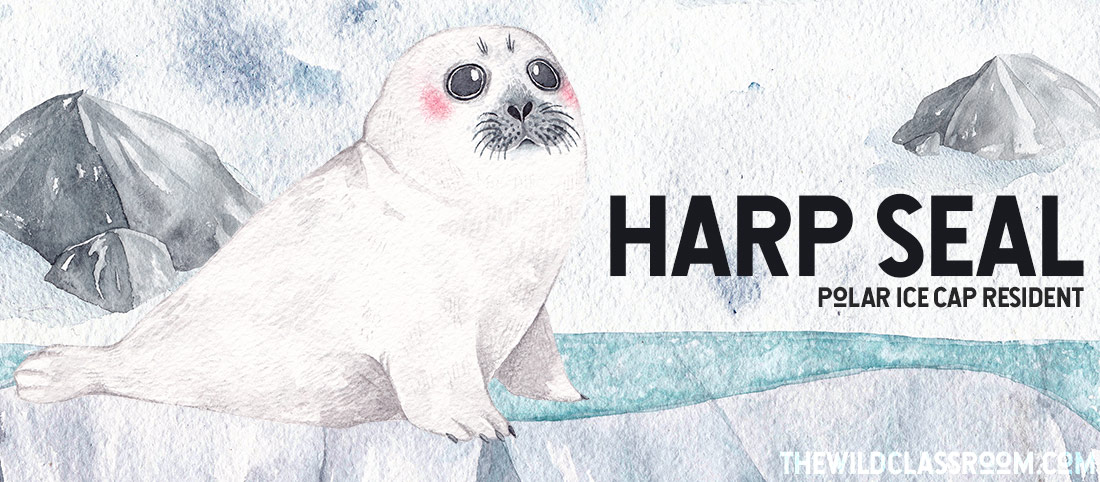
Harp Seals (Pagophilus groenlandicus) and other seal species must also stay warm in the cold air and water. Their fur does not aid much in staying warm but they have very thick blubber that can make up 30% of their body mass. As well, they maintain a higher metabolism to keep warm, along with constricting (tightening up or pinching off) the blood vessels in their skin and pushing the blood inwards to avoid heat loss in the water. This means their skin stays very cold but they keep their organs at a safe temperature. Seals also deal with the lack of fresh water by getting the water they need from the food that they eat, they almost never have to drink. When they have to go a long time without food (and therefore water too) they can use up some of the water and energy stored up in their blubber. Additionally, similar to many desert animals, seals do not urinate often, and when they do it is extremely concentrated to help avoid water loss while getting rid of harmful uric acid.
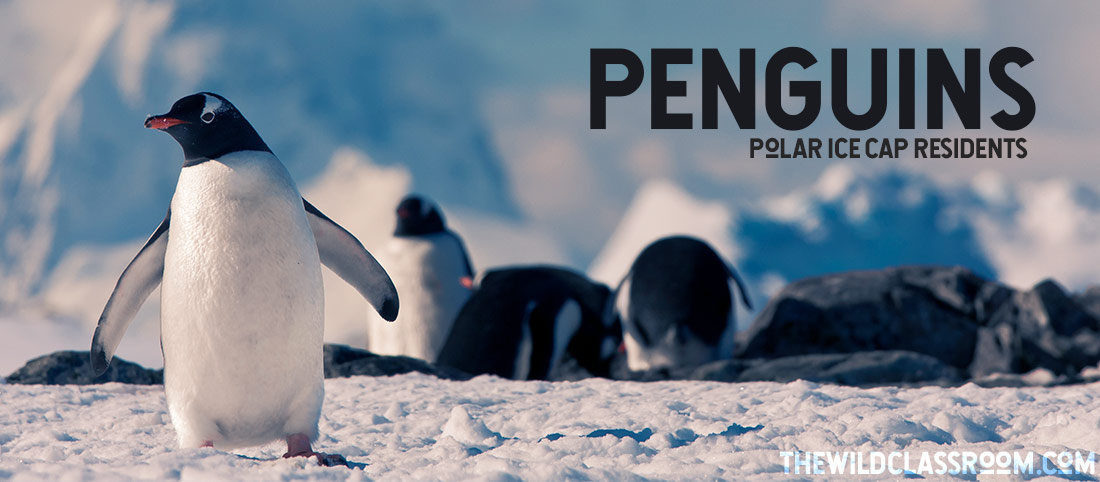
Penguins are the icon of the Antarctic, so how are penguins adapted to survive in such extreme weather? First, like our other examples they maintain a thick layer of blubber. Second, they have very thick and tightly packed feathers, called contour feathers, that are almost impenetrable by water and cold. Beneath these feathers they have two different types of insulating feathers called plumules and after-feathers. This combination helps them to stay very warm in the water and on land. The dark color of their back feathers also helps them absorb heat from the sun. Some penguins, like Emperor Penguins, also have behavioral adaptations to huddle together to stay warm. In addition to this, they keep their eggs and chicks tucked tightly under their feathers and on top of their feet so as not to let them touch the cold ground. Last, their skin is exceptionally thick compared to other birds, helping them not to freeze their feet on the cold ice!
Migrants
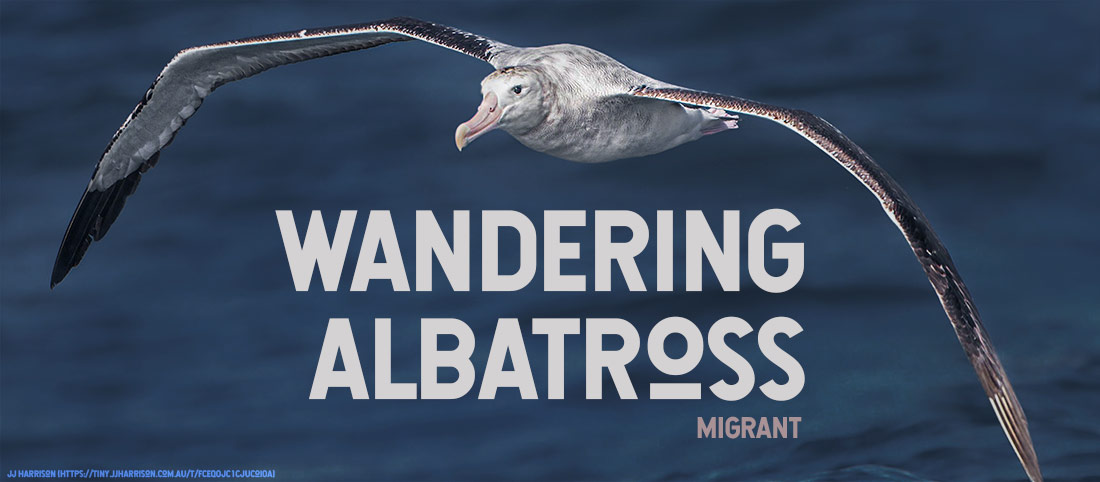
There are a wide range of animals that migrate to the polar ice caps in summer to take advantage of the short productive winters. A large majority of these migrants consist of marine life such as humpback whales, but there is a huge number of seabirds that make incredible journeys every year to reproduce in these regions. For example, The Bar-Tailed Godwit (Limosa lapponica) flies all the way from New Zealand to Alaska every year to breed there. As well, the Wandering Albatross (Diomedea exulans), that spends most of its adult life at sea, ranges all the way from subtropical waters to Antarctica, where they arrive to reproduce. The chicks of the albatross will grow quickly and return to the sea until they return to reproduce themselves.
These birds have to be able to make huge journeys. Many of these migrating birds feed heavily to be ready for the journey and make some pit stops along the way, but many can fly for days straight. Interestingly, some species of albatross actually have a locking mechanism in their wings, to allow them to glide for long distances without having to use muscle power. The Wandering Albatross can cover 10,000 km (~ 6000 miles) in 10-20 days.
Once here, the birds take advantage of the productive oceans to feed their chicks, which have to grow very quickly so they will be strong enough for the migration, or a life at sea, in just a few months. Most of these birds are monogamous, meaning that they mate with the same individual for their whole life, because it takes the effort from both parents to feed their hungry and rapidly growing chicks.
THE POLAR ICE CAPS AND US
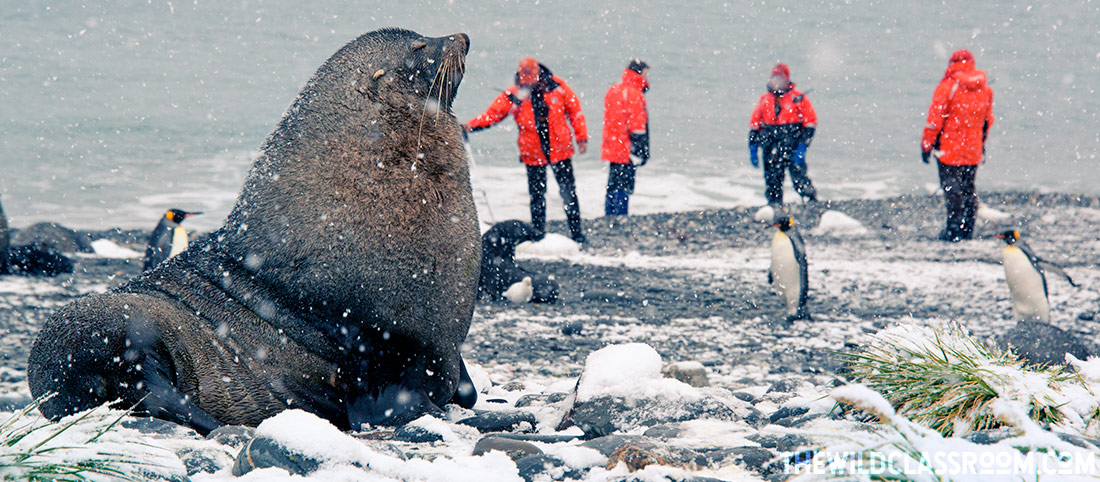
The harsh environment of the polar ice caps makes it almost impossible for anyone to live there. In the case of Antarctica no one does live there full time, but there are many research stations where people spend long periods of time studying the environment. In the Arctic, there are similar stations, and no one lives right at the pole, but there are many communities that live in the region that is considered the arctic polar ice cap. The groups that live here such as the Inuit (which is a larger grouping of various indigenous peoples in The Arctic) have learned how to survive in these intense climates and all of their actions are closely linked to the cycle of freezing and thawing of the ice, just like the animals that live there. Additionally, both the polar ice caps have incredible wildlife watching opportunities and do have tourist visits for this purpose, though it is perhaps less popular than diving on the reef in tropical waters!
Research has shown that the polar ice caps are shrinking rapidly, and though this may seem normal, as we said that they expand and shrink over time, based on geological evidence we know that they are shrinking much more rapidly than ever before. Climate change is evidently the cause for this decrease, and though many governments and groups are working to help slow our impact, we need to act more quickly on this issue.
The loss of the polar ice caps not only means the loss of iconic animals such as the polar bear, but could also mean a huge increase in sea levels worldwide, which will cause problems for nature and human settlements alike.
It is not too late to make a difference, but we must do our part to combat climate change. We can help by both reducing our own carbon footprint and by encouraging governments and corporations to make more sustainable choices for our future, so that generations to come may be able to see a true wild Polar Bear in the arctic or massive flocks of penguins in Antarctica.
TEXT by: Kirstynn Joseph (follow on instagram)
Explore the Polar Ice Caps in VR
The extremely cold “ice deserts” in our poles are hard to get to. Because of that we’ve pulled a few of the best VR videos from the web to showcase what it is like in this biome.
Did you enjoy that 360° experience? If so, watch more.
